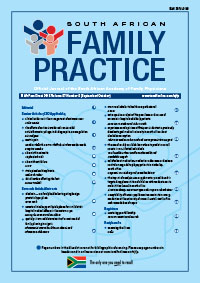The use of readily available biomarkers to predict CD4 cell counts in HIV-infected individuals
Keywords:
albumin, calculated globulin, CD4 cell count, HIV infection, White cell count
Abstract
Background: The use of readily available biochemical investigations to predict the CD4 cell count in HIV-infected patients may provide clinicians with insight regarding disease severity at first contact. The aims of the study were to determine the relationship of calculated globulin and white cell count (WCC) with CD4 cell count. Methods: Data were collected prospectively from ambulatory HIV-infected, anti-retro viral therapy (ART) naive patients at the HIV clinic of King Edward Hospital, Durban, between 2010 and 2012. Results: The mean age of the participants was 39 ± 9.53 years and 70% were female. Median calculated globulin and WCC was 49 g/l and 4.74 × 109 cells/l respectively, whilst the CD4 cell count was 244 cells/mm3. A significant positive correlation was demonstrated between CD4 cell count and WCC (r = 0.25, p < 0.001). WCC and albumin were identified as potential surrogate markers for CD4 count ≤ 200 cells/mm3. Combination of WCC with either albumin or globulin predicts a CD4 count of less than 200 cells/mm3 with moderate accuracy. Conclusion: The use of combined biomarkers may influence initiation of Pneumocystis jiroveci pneumonia prophylaxis in resource-limited settings. Further evaluation is warranted to assess the role of these markers in disease progression and ART. (Full text available online at www.medpharm.tandfonline.com/ojfp) S Afr Fam Pract 2015; DOI: 10.1080/20786190.2015.1073895
Published
2015-08-26
Section
Research Articles
By submitting manuscripts to SAFP, authors of original articles are assigning copyright to the South African Academy of Family Physicians. Copyright of review articles are assigned to the Publisher, Medpharm Publications (Pty) Ltd, unless otherwise specified. Authors may use their own work after publication without written permission, provided they acknowledge the original source. Individuals and academic institutions may freely copy and distribute articles published in SAFP for educational and research purposes without obtaining permission.

